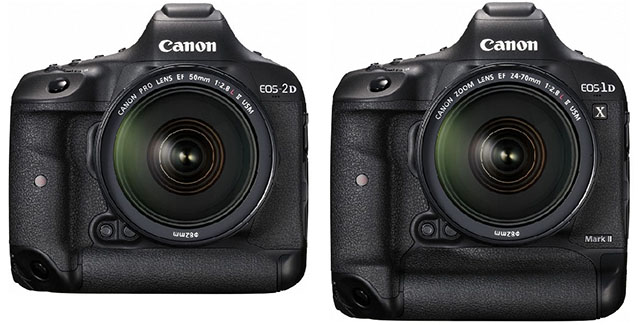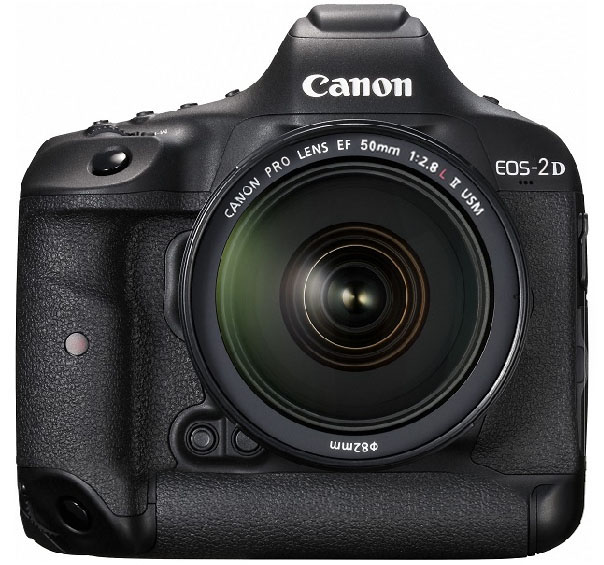645 Canon, can you hear me?
This week I went out of my way to praise the Canon EOS 1Dx Mark II (blog 641) ... but I have slept on the issue of wether 'The Thing' truly is the perfect camera for me. It's not ... though I may well (reluctantly) buy it in the end - I reckon I will not wait for Mark III - but I would run head first into getting the EOS 2D, when (if) it comes ... what about it, Canon ... can you hear me?
This is my point: I fully understand that for all sports as well as some press photographers the EOS 1 is 'The Thing'. And for amateurs 'The Thing' is the EOS 5 ... I know, I know, many pros also use the 5 ... but my point is this: They use the 5 because the 2 doesn't exist.
Please pay attention now, Canon:
Advertising, fashion and magazine photographers probably don't need 14 frames per second ... what they need is resolution. Not only because the pictures are printed large, but because art directors often want us to "shoot wide" so they can crop into the image. I understand you can't have both (speed & resolution) ... the processors are not ready for it just yet. But ... we want an EOS-1-like camera; the 5s won't do.
So, for the EOS 2D do away with the extra-fast motor and make the camera smaller. Of course I don't know what the break-up is of EOS 1 users ... my guess is, it must be mainly sports shooters. However, even press photographers probably can live with a slower speed (rate of frames per second) as a trade in for more portability ... and indeed the 'digital zoom' (in post production).
Furthermore, the 2D
probably would not need to be designed for use with the expensive CFast 2.0™
cards ... which can retail for way more than $1,000
A while ago I interviewed a travel photographer, Jan Zwart, for my ZEN Photoart book ... Jan uses a couple of 5D cameras, he reckons the 1D is too bulky and heavy; he rarely shoots more than a couple of frames a second. Yet, he needs to replace them every couple of years; they just wear out. He too is a candidate for a 2D ...
... as is every other travel, advertising, portrait, wedding, architecture, botanical, medical, still life, functions, museum & archival, aerial, catalogue, commercial, industrial, aquatic & underwater, scientific, astronomical & space-technological, food, landscape, real estate, documentary, fashion, product, antiques, editorial, corporate photographer and photo journalist ... to name just a few!
(And that doesn't include artistic, fine art, photo art, visual arts, contemporary art, modern art, conceptual photographers and other deviants; let'em suffer with a 5D.)
(Another group of photographers not included: You guessed it, amateurs who want THE BEST, but who won't buy the current flagship camera, because of the bulk.)
(And yet another group - let's not be shy about this - scores of 645 format shooters, especially once you have got the PRO-series lenses going; see below [blog 575].)

So, the only difference between the 1D and the 2D is the frames per second (fps) rate on the one hand ... and the resolution (pixel count) on the other hand. Every other feature, every other function would be exactly the same; upgrades to the cameras would be in tandem ... if one receives an upgrade, the other camera will receive it at the very same time. (My guess is, many serious shooters may well be compelled to buy both bodies ... and - other than your established clientele - so will be many a Nikon photographer.)

I've written about the issue before, in my blog 575 (below is an update:)
As regards Professional Photography, I was excited to find out about a 50mp Canon, but I was disappointed to learn that the camera used for the sensor is the 5D. I don’t really like the 5D. I switched - as soon as it arrived - to the EOS 1Ds (from a D60). My understanding is that the current EOS 1Dx in the main is a sports-shooter camera; maybe also a press camera … with its fast burst rate etc.
I would like to see a camera that sits between the EOS 1 and the EOS 5, namely an EOS 2D. Smaller than the 1, more substantial than the 5, with controls like the 1.
This would be the camera for professional advertising and fashion photographers; and this would be the camera designed to ultimately compete with the 645 format.
Importantly: This camera should shoot three resolutions: 50mp, 25mp, 12.5mp … where - and this would be the challenge to Canon - the lower resolutions offer the image/pixel depth of sensors with a low pixel count, but larger pixels. So if I don’t need 50mp, but just 10 or 12mp, I have the quality of a low mp full size sensor to work with. (And then - one day, maybe in 3 yrs time - the sensor will be upgraded to offer 4 resolutions, incl. 100mp ... no, I correct myself, not maybe …)
I have absolutely no idea how this can be achieved … but That’s. What. I. Want.
The concept behind having both an EOS1D and an EOS 2D is that with the EOS1 the increasing processor capacity will always be used to increase the speed, i.e. fps ... in due time the EOS 1 will shoot 20mp RAW files at 25 fps, which shall increase to 50 fps and beyond; the pixel count probably will remain at 20mp.
The increasing processing power of the EOS 2 shall always be put toward increasing resolution. In due time the camera will shoot 100mp files, at a rate of probably no more than 5 to 10 fps. Thus the two cameras shall complement one another, where serious photographers will have reason to own both. But remember, the two cameras shall be identical in every other respect.
For the EOS 2D I want three prime lenses (sell them in a kit, like sets of cine primes): 25mm, 50mm, 100mm … these lenses can all be f/2.8, or even f/4. But they shall be matched to the very high resolution of the sensor, with no chromatic aberration, superior sharpness right to the edges and no distortion; in due time you'll add 12.5mm and 200mm lenses. They all would be of the same quality as Leica lenses.
Here is another point where they really differ from the other L lenses (in fact from any other lenses) ... these lenses all shall be designed to be used with a tripod bracket ... (a lens collar mount) even the wide angles; another point of difference will be that these lenses shall have square lens-shades. Call them the “PRO-series”.
The bracket shall be designed in a way where you use it to remove the camera from the tripod … not a device attached to the camera body; furthermore, the bracket shall allow for easy portrait / landscape orientation of the camera; lastly, one bracket shall fit all 3 lenses. Obviously this collar mount will be similar to the ones used for the 100mm macro or the 70-200mm zoom lenses. Furthermore, these PRO-series lenses shall have the same size front element ... so one size filter fits all.
p.s.
just to be sure, the EOS 2 - as shown above - does not exist; it is a figment of my imagination
(the term "wish-thinking" was invented for me)